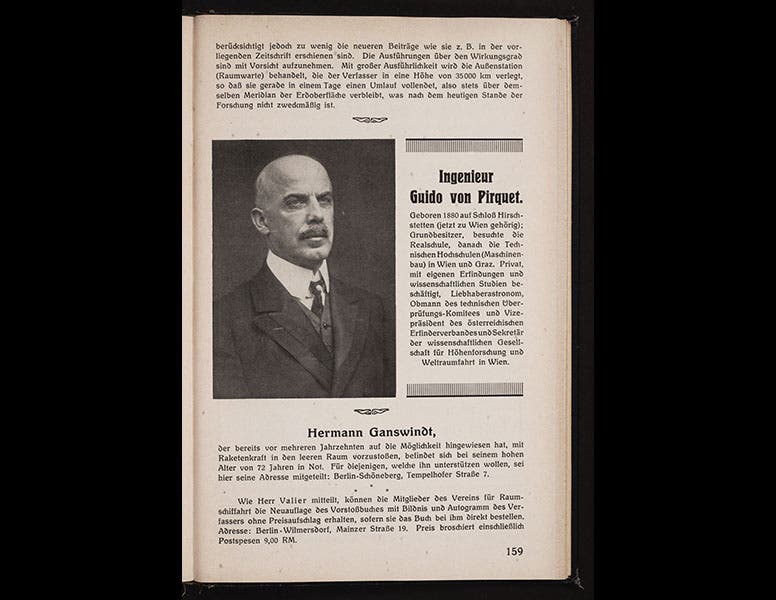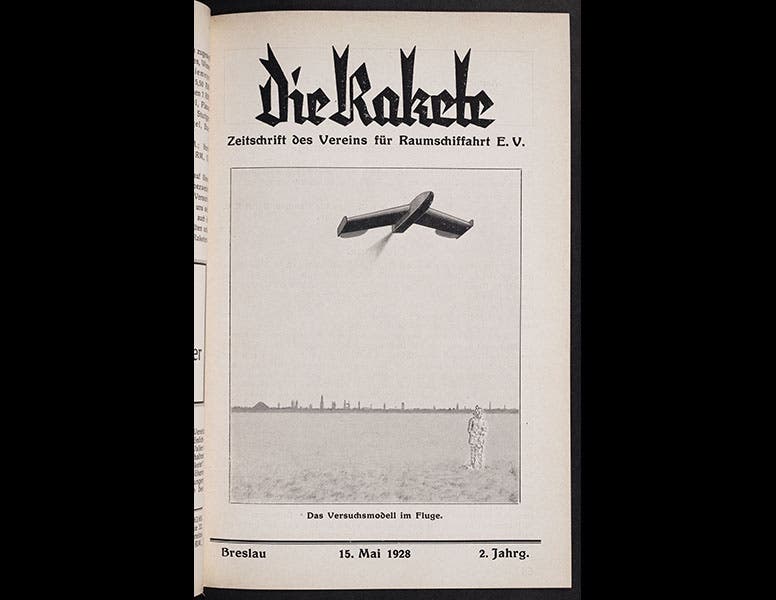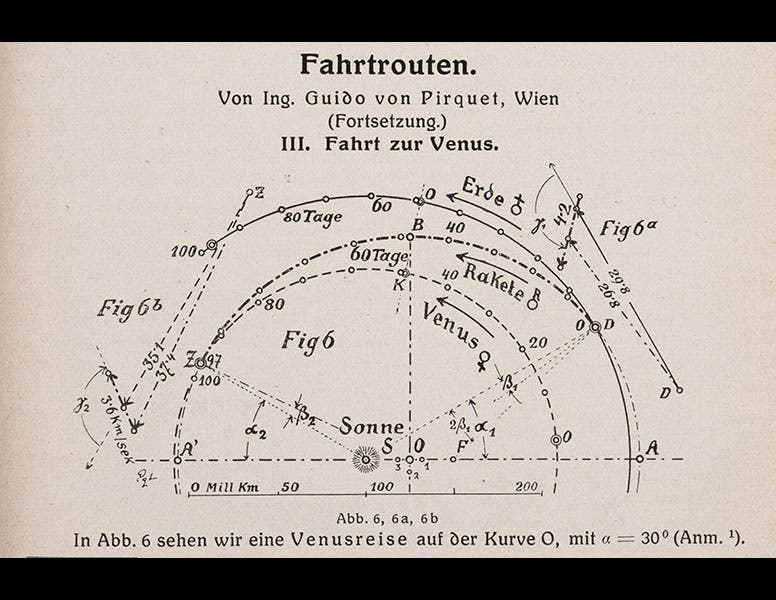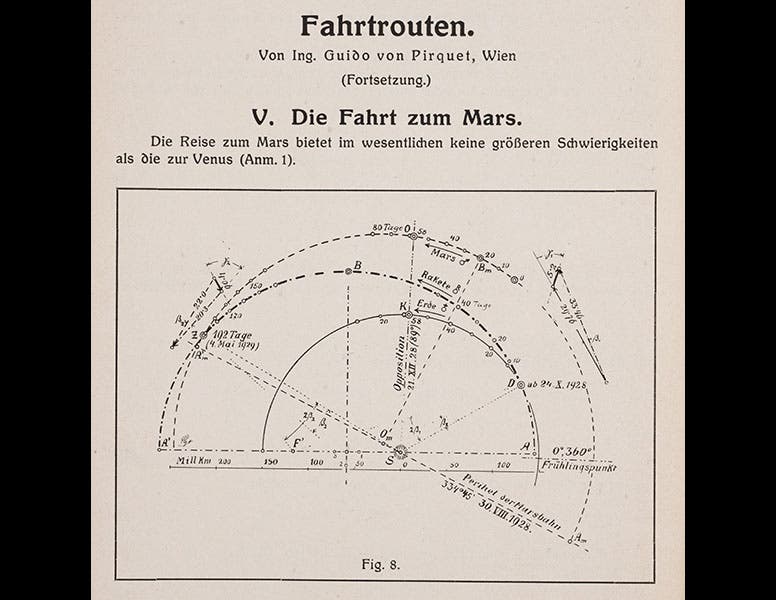Scientist of the Day - Guido von Pirquet


Die Rakete (The Rocket), the house magazine of the VfR


Guido von Pirquet, an Austrian rocket pioneer, was born Mar. 30, 1880, in the family castle in Hirschstetten, near Vienna, inheriting the title of Baron. He developed an interest in rockets at an early age. He and a friend founded a rocket society in Vienna in 1926, one year before the more famous Verein für Raumschiffahrt (Society for Space Travel, usually known as the VfR) was founded in Berlin. While most of the VfR members were interested in sending a rocket to the Moon, inspiring Fritz Lang's film, Frau im Mond (1929), von Pirquet took a longer view, wondering how best to send a spacecraft to Venus or Jupiter or Saturn. He worked out optimum orbits for what were at that time merely thought-launches, and he published articles in Die Rakete (The Rocket), the house magazine of the VfR, and in a book edited by Willy Ley, Die Möglichkeit der Weltraumfahrt (The Possibility of Space Travel, 1928). It is said that von Pirquet’s proposed orbit to Venus (fourth image) was the very one that the Soviets used for their first Venus probe in 1961. Von Pirquet was one of the first to recognize the possibility of gravity assist, where a spacecraft might utilize the great mass of Jupiter to accelerate and change direction. He also suggested that space explorers could use orbiting space stations as stepping-stones to the planets, and that it might be possible to assemble inter-planetary rockets at these stations, since it is so difficult to lift a large craft off the earth.
Die Rakete, where most of von Pirquet's articles appeared, was only published for three years, 1927-29. We have the complete run, such as it is, in the Library; we show one of the issue title pages above (third image). Several years ago, we acquired the Willy Ley book mentioned above, which contains an important von Pirquet paper that includes an image of an ion rocket ship (first image). The other illustrations above, including the portrait of von Pirquet, are from volume 2 of Die Rakete. Two of them show rather detailed diagrams of proposed rocket trajectories to Venus (fourth image) and Mars (fifth image).
We do not know what von Pirquet did between 1931, when the VfR disbanded, and 1938, when Hitler invaded Austria. But the latter act terminated von Pirquet’s interest in rockets, although he lived to the age of 86, dying in 1966. It is said that he passed away at Hirschstetten Castle, but as the castle was obliterated during the war, it must have been somewhere nearby. Von Pirquet has an honorary grave in the cemetery in Hirschstetten, but if he has a physical memorial anywhere, we could not find it. There is a digital tribute at the International Space Hall of Fame at the New Mexico Museum of Space History.
Dr. William B. Ashworth, Jr., Consultant for the History of Science, Linda Hall Library and Associate Professor, Department of History, University of Missouri-Kansas City. Comments or corrections are welcome; please direct to ashworthw@umkc.edu.







